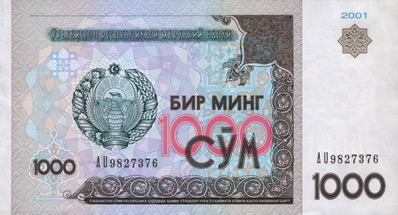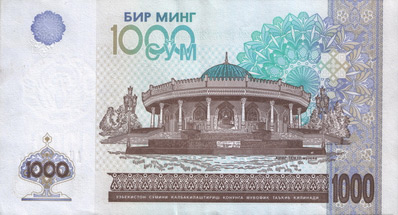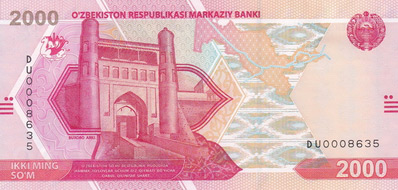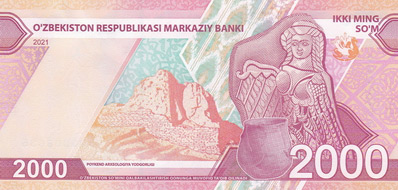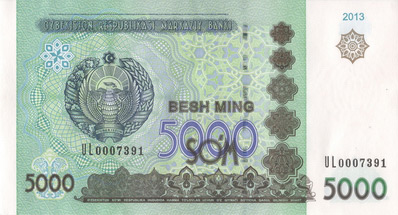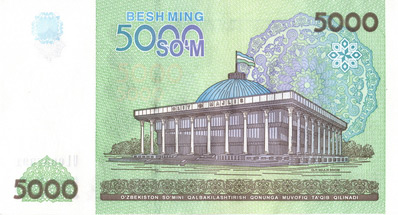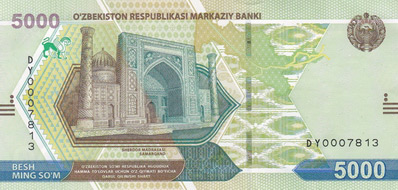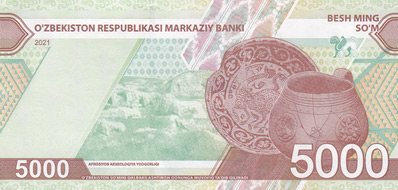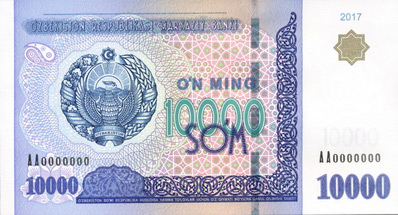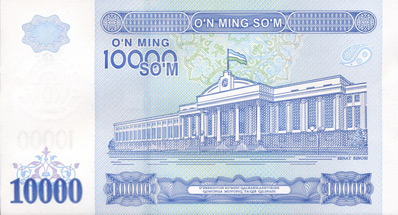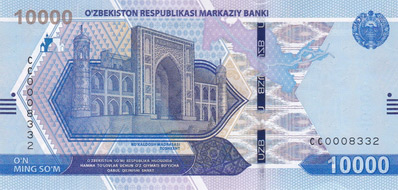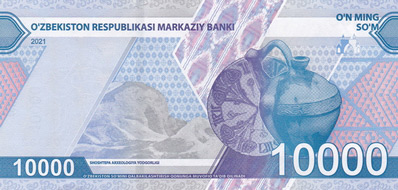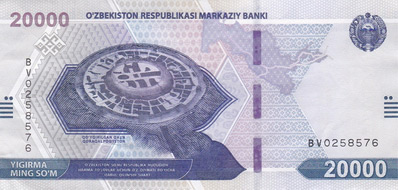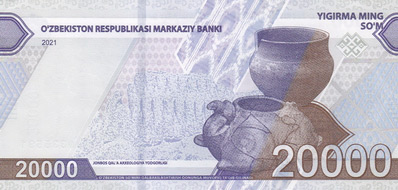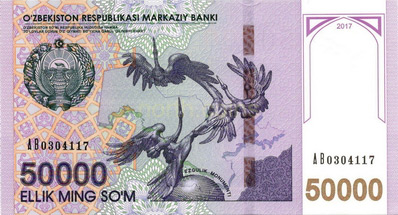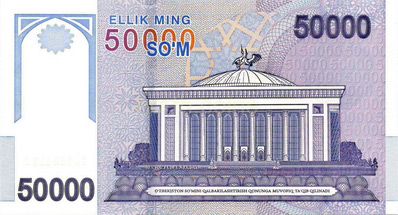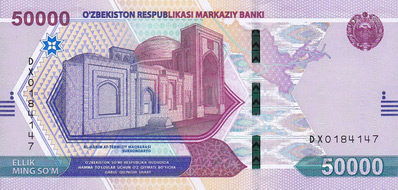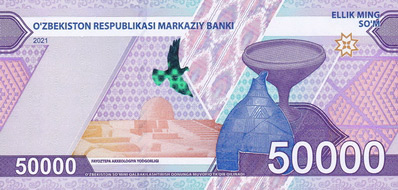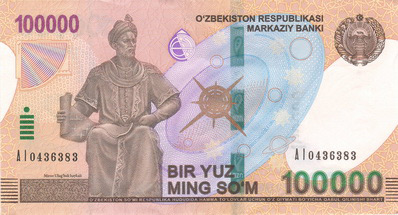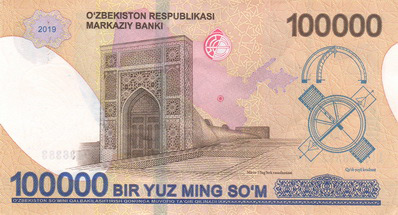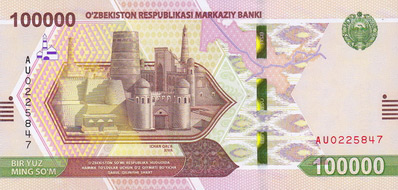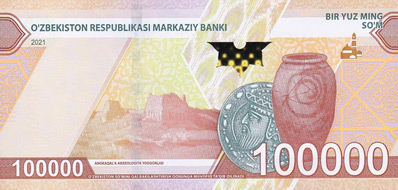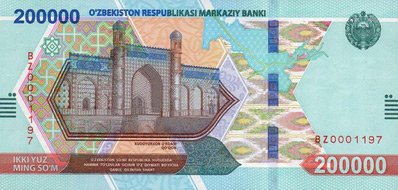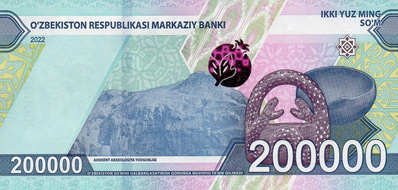National Currency of Uzbekistan
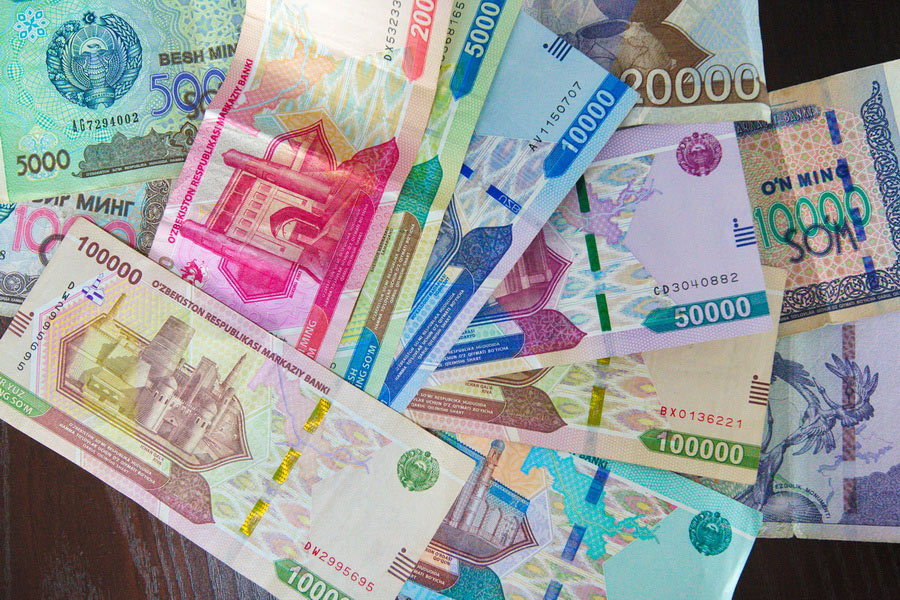
The national currency of Uzbekistan is the Uzbek soum. It’s more than just money; it's a symbol of the country's cultural identity. The banknotes feature landmarks from different cities across Uzbekistan.
History of the Uzbek Soum
The Uzbek soum was introduced as the national currency on July 1, 1994. Initially, banknotes of 1, 3, 5, 10, 25, 50, and 100 soums were issued, along with coins of 1, 3, 5, 10, 20, and 50 tiyin (1 soum = 100 tiyin). In 1997, additional coins of 1, 5, and 10 soums were released.
A 200 soum banknote appeared in 1997, followed by a 500 soum note in 1999. In 2001, the 1,000 soum note was introduced, becoming the last to feature Cyrillic text. Subsequent banknotes used Latin script. In 2013, a 5,000 soum note was issued, followed by 10,000 and 50,000 soum notes in 2017, and 100,000 soums in 2019.
In 2021, new banknotes made of thicker paper with special lacquer coating were introduced in denominations of 2,000, 5,000, 10,000, 20,000, 50,000, and 100,000 soums. In 2022, a 200,000 soum note was added. These newer notes have enhanced security features, smaller sizes, and local watermarks in the form of a camel, symbolizing the Great Silk Road. They also include raised elements for the visually impaired.
In 2018, coins of 50, 100, 200, and 500 soums were issued, and in 2022, a 1,000 soum coin was introduced. Currency in Use
Older paper and metal money have been gradually withdrawn from circulation. Today, banknotes ranging from 1,000 to 200,000 soums and coins of 500 and 1,000 soums are commonly used. Notably, 5,000, 10,000, 50,000, and 100,000 soum banknotes exist in two designs each and are accepted equally.
Notes with denominations of 500 soums or less are now rare and are often sold at prices higher than their face value in souvenir shops in cities like Samarkand, Bukhara, and Khiva.
What’s Depicted on Uzbek Money?
1,000 Soums (2001)
- Colors: Blue, violet, brown, and cherry blend.
- Front: The coat of arms of Uzbekistan, ornamental elements, and patterns.
- Back: The facade of the State Museum of Timurid History in Tashkent.
2,000 Soums (2021)
- Colors: Red, purple, yellow-green, and light blue.
- Front: The Ark fortress in Bukhara and a two-humped camel, symbol of the city.
- Back: The ruins of Paikend near Bukhara and archaeological finds from the ancient settlement of Varakhsh.
5,000 Soums (2013)
- Colors: Green, lettuce, and blue.
- Front: The coat of arms of Uzbekistan and oriental ornaments.
- Back: The building of the Oliy Majlis (Parliament) of Uzbekistan in Tashkent.
5,000 Soums (2021)
- Colors: Green, yellow-green, and brown.
- Front: Sherdor Madrasah in Samarkand’s Registan and a winged leopard, symbol of the city.
- Back: The ruins of the ancient settlement of Afrasiab and archaeological finds discovered there.
10,000 Soums (2017)
- Colors: Blue.
- Front: The coat of arms of Uzbekistan and oriental ornaments.
- Back: The Senate of the Oliy Majlis in Tashkent.
10,000 Soums (2021)
- Colors: Blue and purple.
- Front: Tashkent madrasah Kukeldash and the symbol of the gate of the Uzbek capital.
- Back: The ruins of Shosh-tepa settlement and images of ancient pottery.
20,000 Soums (2021)
- Colors: Blue-purple and brown.
- Front: The Karakalpak fortress Koy-Krylgan-Kala and traditional Karakalpak patterns.
- Back: The Janbas-Kala fortress and ancient artifacts found by archaeologists.
50,000 Soums (2017)
- Colors: Lilac and purple.
- Front: The "Ezgulik" arch on Tashkent's Independence Square and the coat of arms of Uzbekistan.
- Back: The Palace of International Forums "Uzbekistan" in Tashkent.
50,000 Soums (2021)
- Colors: Blue and purple.
- Front: The mausoleum of Al-Hakim at-Termizi in Termez and a seal symbol found in Surkhandarya region.
- Back: The Fayaz-Tepa fortress in Surkhandarya region and images of ancient pottery.
100,000 Soums (2019)
- Colors: Yellow-orange and brown.
- Front: A monument to Mirzo Ulugbek in Samarkand and several planets.
- Back: The entrance to Ulugbek's observatory and an arc quadrant (astronomical instrument).
100,000 Soums (2021)
- Colors: Green and dark brown.
- Front: Several buildings of the Khiva fortress Ichan-Kala and a minaret symbol.
- Back: Images of an ancient silver coin and ancient pottery.
200,000 Soums (2021)
- Colors: Turquoise, brown, blue, and light orange.
- Front: The Kokand palace of Khudoyar Khan.
- Back: The ruins of ancient Akhsikent (Akhsiket) in Fergana region, along with artifacts: pottery and a talisman in the form of a two-headed snake.
Currency Exchange for Uzbek Sums
You can exchange foreign currency for Uzbek sums at exchange offices in international airports and numerous bank branches across Uzbekistan. The most commonly accepted currencies are US dollars and euros. Pounds sterling, Swiss francs, Japanese yen, and Kazakh tenge can also be exchanged at most banks.
In some banks, you might be able to exchange other currencies, but this is less common. Note that bank branches in Uzbekistan do not operate on Saturdays, Sundays, or public holidays, even if they fall on weekdays. You can also withdraw cash from Visa and MasterCard in the lobbies of some hotels in major cities.


